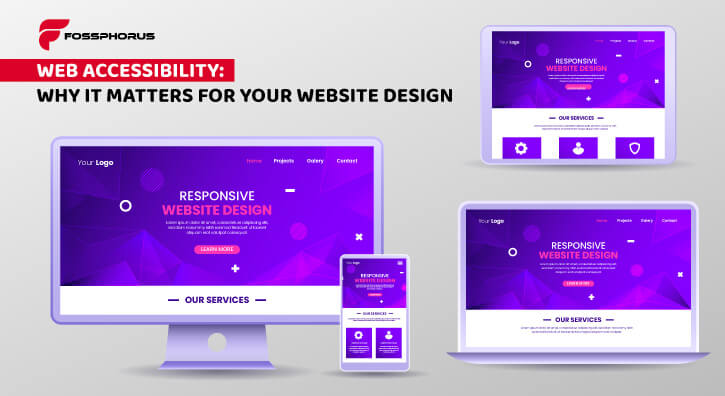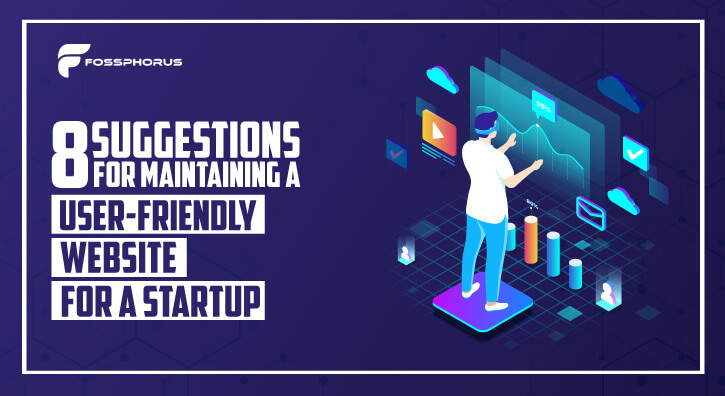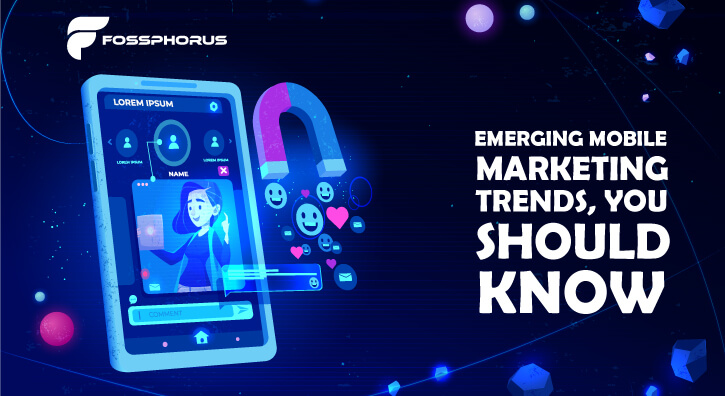BLOG Detail
Web Accessibility: Why It Matters for Your Website Design
04 October 2024
05:55 AM

Indeed, websites are the ultimate source of information, a treasure trove of entertainment, and a hub of communication. Yet, certain barriers make website accessibility difficult for people with disabilities.
Yes! You read that right…
The new buzzword web accessibility has turned the digital world upside down. Undeniably, the internet has opened up a whole new world of opportunities for people with disabilities, allowing them to communicate, access information, and participate in society like never before. However, many websites still fail to take accessibility into consideration, which can make it impossible for some users to fully engage with their content.
In addition to being a moral imperative, ensuring website accessibility can also have significant benefits for businesses and organizations. A website that is accessible to everyone can reach a wider audience, improve user experience, and even help with SEO (search engine optimization).
So, if you want to create a website that truly makes a difference and serves everyone, it's time to start thinking about a website with good accessibility.
Let's dive in and explore why web accessibility is so important!!!
Wait! What Is Website Accessibility???
Website accessibility entails designing and building websites in such a way that individuals with disabilities can easily access them. This includes ensuring that people with visual, auditory, physical, or cognitive disabilities can navigate and understand the content on the website.
Accessible websites often follow guidelines and standards set forth by organizations such as the Web Accessibility Initiative (WAI) of the World Wide Web Consortium (W3C) - they may use features such as alternative text for images, closed captioning for videos, and keyboard-only navigation to make the website usable for a wider range of users.
Why Is Web Accessibility Important?
The despair to navigate through a badly designed website, the squinting at the poorly designed font, and the annoyance at a slow-loading website sometimes impede our user experience. For people with disabilities, these issues can completely prevent them from using the website at all.
Although integrating accessibility into website design may appear daunting for those who are new to it, it is an essential aspect of user experience. Rather than attempting to add website accessibility as an afterthought, it should be integrated into the web development and design process from the outset.
1. Accessibility is a Human Right
Access to information and services is a human right, and the internet is a critical source of information and services in today's world. Web accessibility is critical to ensuring individuals with disabilities can fully take part in and contribute to society.
It enables individuals with disabilities to access education, employment, government services, and other aspects of daily life that are increasingly reliant on the Internet. In addition to assisting individuals with disabilities, enhancing web accessibility can enhance the overall user experience for all users.
For example, captions and transcripts for videos can benefit people who are not fluent in the language spoken in the video, while clear navigation and well-structured content can make websites easier to use for all users.
2. Increases Inclusivity
Web accessibility is a vital step toward creating inclusivity. It helps to break down barriers and ensure that people with disabilities can access the same information and services as everyone else, thereby promoting social inclusion and equality. When websites are inaccessible, people with disabilities may feel excluded and isolated from important aspects of society.
This can have a negative impact on their personal and professional lives, limiting their opportunities and restricting their ability to fully participate in society. By removing barriers to information and services, website accessibility promotes social inclusion and equality.
By contrast, when websites are designed with accessibility in mind, people with disabilities can participate more fully in all aspects of life. They can access information, communicate with others, and engage with the world around them on an equal footing with their non-disabled peers.
3. Improves User Experience
A website that has been designed with accessibility in mind is more user-friendly, intuitive, and easy to navigate, regardless of a user's abilities.
For instance, features like clear and easy-to-read fonts, good color contrast, and well-organized content make it easier for all users to read and understand the information on a website.
Additionally, a website with good accessibility tends to load faster and perform better on different devices and internet speeds, which benefits all users. When websites are designed with accessibility in mind, they often have simpler and cleaner code that is easier for search engines to crawl, resulting in improved search engine optimization (SEO).
4. Expands Audience and Potential Customers
By making websites accessible, businesses and organizations can reach a broader audience, including people with disabilities. Website accessibility helps companies position themselves as leaders in their respective industries. This can lead to increased sales and revenue, and it also promotes the company's reputation as an inclusive and socially responsible organization.
Moreover, designing accessible websites demonstrates a company's commitment to social responsibility, which can improve its reputation and brand image. Clients are more likely to do business with companies that prioritize accessibility and inclusivity, as it shows that they value diversity and are committed to serving all members of the community.
Furthermore, creating accessible websites can also help to avoid legal issues. Many countries, including the United States, have laws requiring websites to be accessible to those with disabilities. By ensuring that their websites are accessible, businesses and organizations can avoid legal problems and costly lawsuits.
5. Website accessibility does Future-proofing
Designing websites with accessibility in mind can also future-proof them against new technologies and devices such as voice assistants, virtual and augmented reality, and other emerging technologies that may become popular in the future.
Furthermore, creating accessible websites can also help businesses and organizations prepare for the aging population. By designing accessible websites, companies can prepare for the demographic shift and ensure that their web applications are accessible to all users, regardless of their capabilities.
Above all, designing accessible websites promote innovation and creativity. When designers and developers focus on creating accessible websites, they are forced to think differently. This can lead to new and innovative design ideas that benefit all users, regardless of their abilities, and help push the industry forward.
Building an Accessible Website Is the Right Thing to Do!
Certainly, website accessibility demonstrates an organization's commitment to inclusivity. Besides, it provides avenues for accessing untapped user bases and enhances the user experience for people of diverse abilities.
If your company has not implemented web accessibility features for people with disabilities, it is missing out on an opportunity to serve a significant portion of its potential audience. However, by learning about the different approaches and options available, you can introduce a new level of web accessibility to meet the needs of those who require it. Don’t forget, brands must prioritize web accessibility, considering its importance in assisting the target audience and the numerous ways to make the website more accessible to all.
For more tips on the website with good accessibility, be sure to get in touch with Fossphorus.




